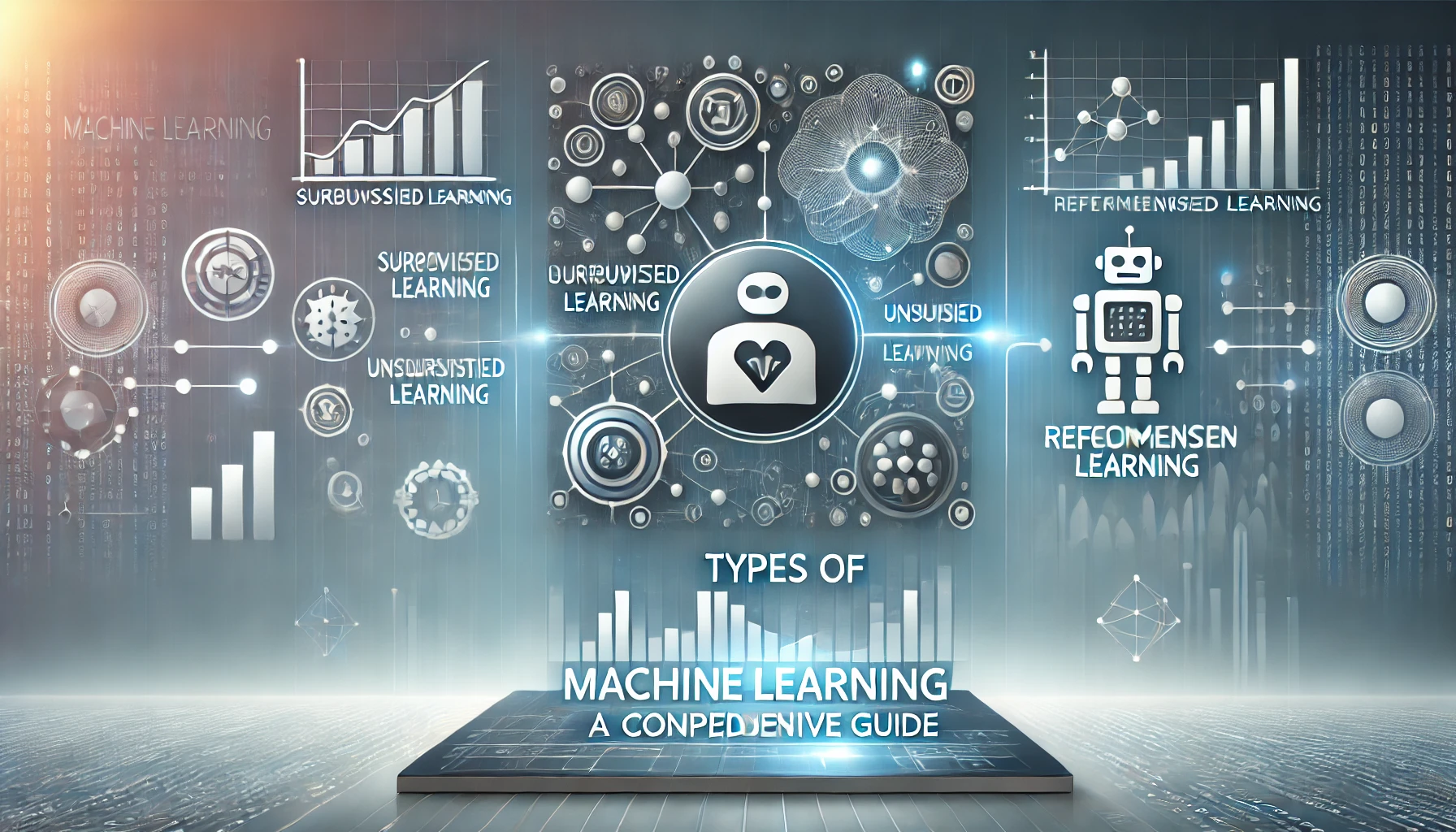
Machine learning (ML) is a branch of artificial intelligence (AI) that enables systems to learn from data, improve over time, and make intelligent decisions. Understanding the different types of machine learning is crucial for applying the right techniques to solve various problems. This comprehensive guide will explore the three primary types of machine learning: supervised, unsupervised, and reinforcement learning.
What is Machine Learning?
Machine learning involves algorithms and models that allow computers to perform tasks without explicit instructions. Instead of following predefined rules, these systems analyze data to identify patterns and make decisions.
The Three Types of Machine Learning
Supervised Learning
Supervised learning is the most common type of machine learning. In this approach, the model is trained on a labeled dataset, meaning each data point is paired with an output label. The goal is for the model to learn the mapping from inputs to outputs and make accurate predictions on new, unseen data.
Examples:
Regression:
Predicting continuous values, such as house prices or stock prices.
Classification:
Categorizing data into discrete classes, such as spam detection or image recognition.
Algorithms:
Linear regression, logistic regression, decision trees, support vector machines (SVM), and neural networks.
Applications:
Email filtering, fraud detection, medical diagnosis, and recommendation systems.
Unsupervised Learning
In unsupervised learning, the model is trained on an unlabeled dataset. The system must find patterns and relationships within the data without prior knowledge of what the output should be. This type of learning is useful for discovering hidden structures in data.
Examples:
Clustering:
Grouping similar data points together, such as customer segmentation or image compression.
Association:
Finding rules that describe large portions of the data, such as market basket analysis.
Algorithms:
K-means clustering, hierarchical clustering, principal component analysis (PCA), and apriori algorithms.
Applications:
Market research, genetic sequence analysis, anomaly detection, and recommendation systems.
Reinforcement Learning
Reinforcement learning involves training a model to make a sequence of decisions by interacting with an environment. The model learns by receiving feedback in the form of rewards or penalties and aims to maximize the cumulative reward over time.
Examples:
Game Playing:
Teaching an agent to play and win games, such as chess or Go.
Robotics:
Enabling robots to navigate and perform tasks autonomously.
Algorithms:
Q-learning, deep Q-networks (DQNs), policy gradient methods, and actor-critic methods.
Applications:
Autonomous vehicles, robotic control, financial trading, and personalized recommendations.
Choosing the Right Type of Machine Learning
Selecting the appropriate type of machine learning depends on the problem you are trying to solve and the nature of your data:
Supervised Learning:
Use when you have a labeled dataset and need to make predictions or classifications.
Unsupervised Learning:
Use when you need to explore and understand the underlying structure of unlabeled data.
Reinforcement Learning:
Use when your task involves decision-making over time with an objective to maximize rewards.
Understanding the different types of machine learning is essential for leveraging the power of AI in various applications. Supervised, unsupervised, and reinforcement learning each have unique strengths and are suitable for different types of problems. By choosing the right approach, you can build models that make accurate predictions, uncover hidden patterns, and make intelligent decisions in dynamic environments.


